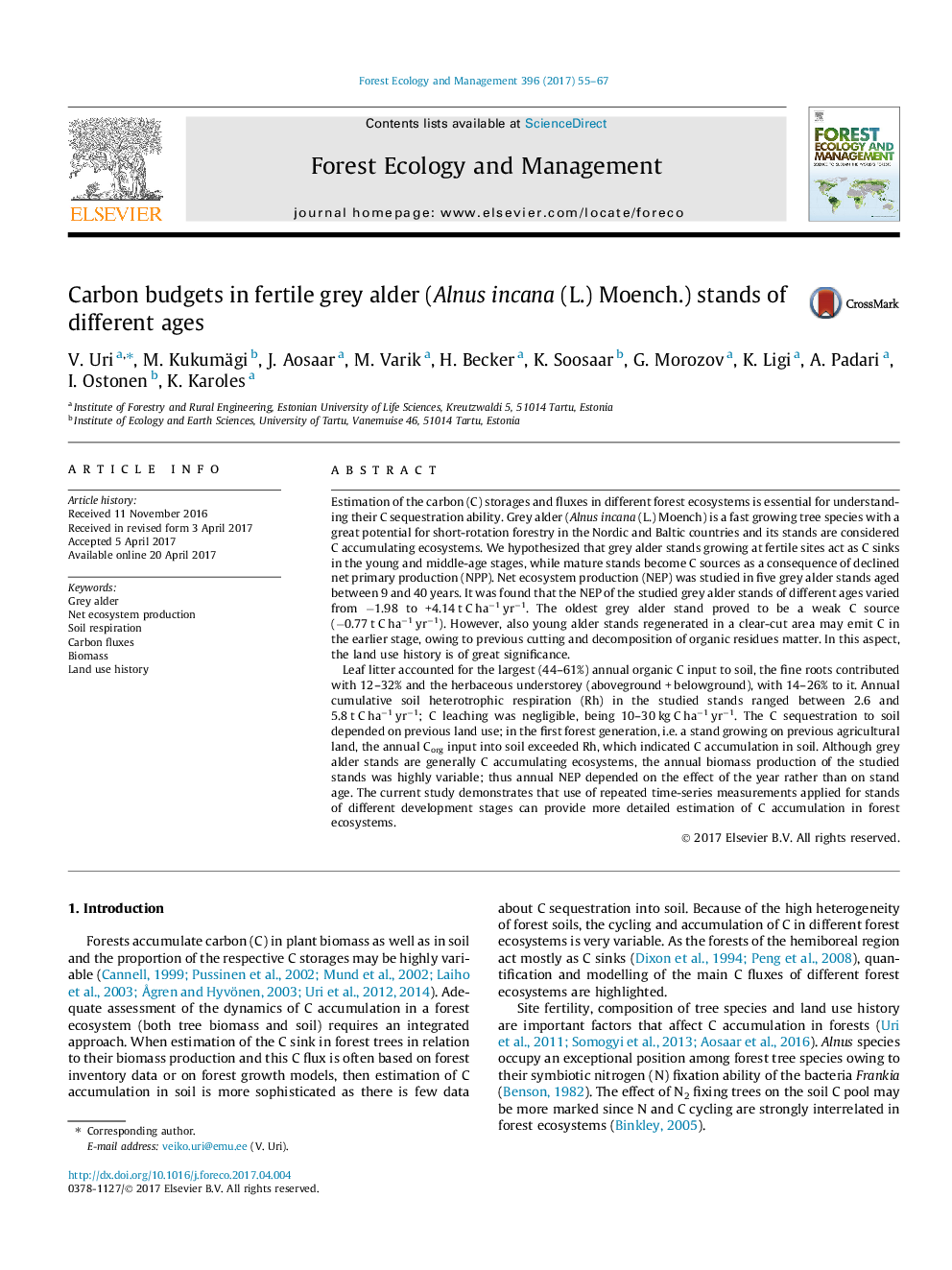| Article ID | Journal | Published Year | Pages | File Type |
|---|---|---|---|---|
| 4759416 | Forest Ecology and Management | 2017 | 13 Pages |
Abstract
Leaf litter accounted for the largest (44-61%) annual organic C input to soil, the fine roots contributed with 12-32% and the herbaceous understorey (aboveground + belowground), with 14-26% to it. Annual cumulative soil heterotrophic respiration (Rh) in the studied stands ranged between 2.6 and 5.8 t C haâ1 yrâ1; C leaching was negligible, being 10-30 kg C haâ1 yrâ1. The C sequestration to soil depended on previous land use; in the first forest generation, i.e. a stand growing on previous agricultural land, the annual Corg input into soil exceeded Rh, which indicated C accumulation in soil. Although grey alder stands are generally C accumulating ecosystems, the annual biomass production of the studied stands was highly variable; thus annual NEP depended on the effect of the year rather than on stand age. The current study demonstrates that use of repeated time-series measurements applied for stands of different development stages can provide more detailed estimation of C accumulation in forest ecosystems.
Related Topics
Life Sciences
Agricultural and Biological Sciences
Ecology, Evolution, Behavior and Systematics
Authors
V. Uri, M. Kukumägi, J. Aosaar, M. Varik, H. Becker, K. Soosaar, G. Morozov, K. Ligi, A. Padari, I. Ostonen, K. Karoles,
